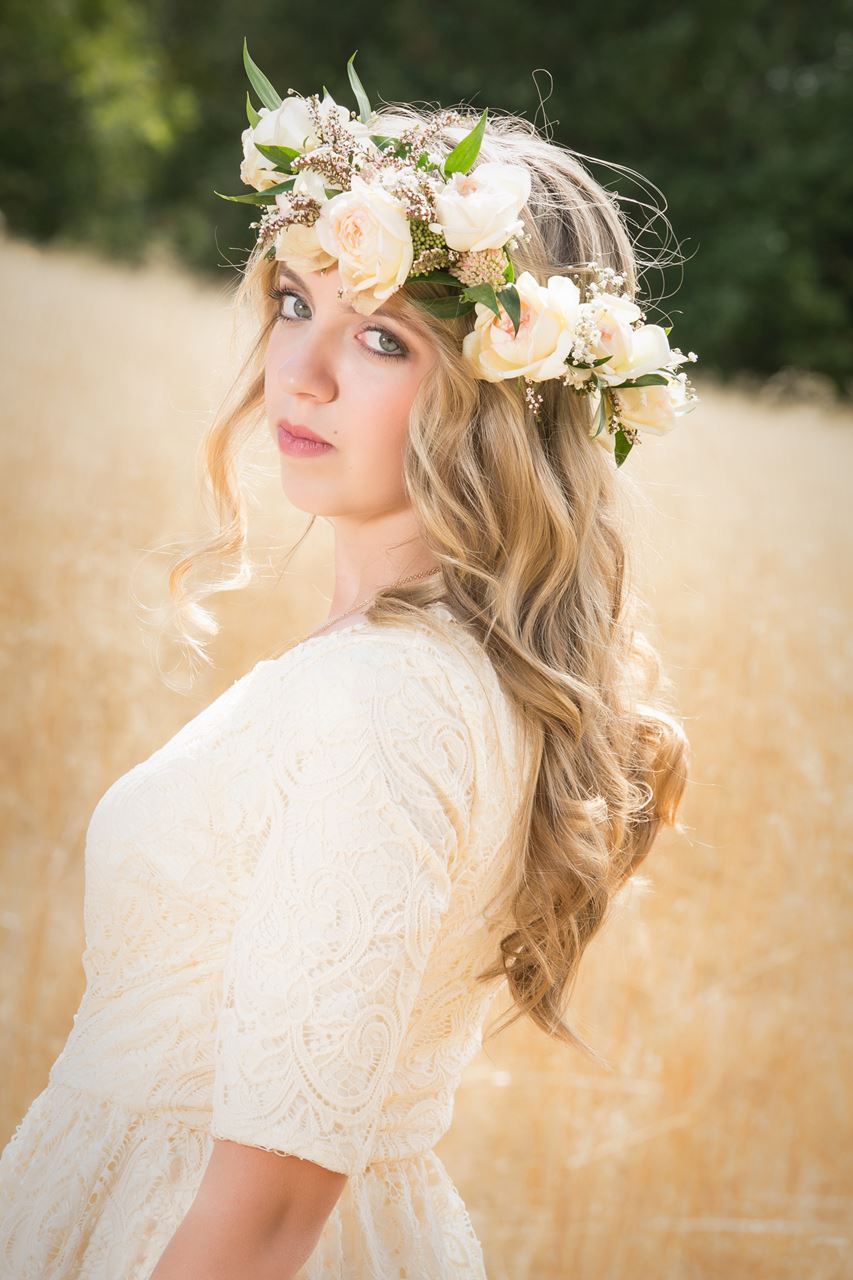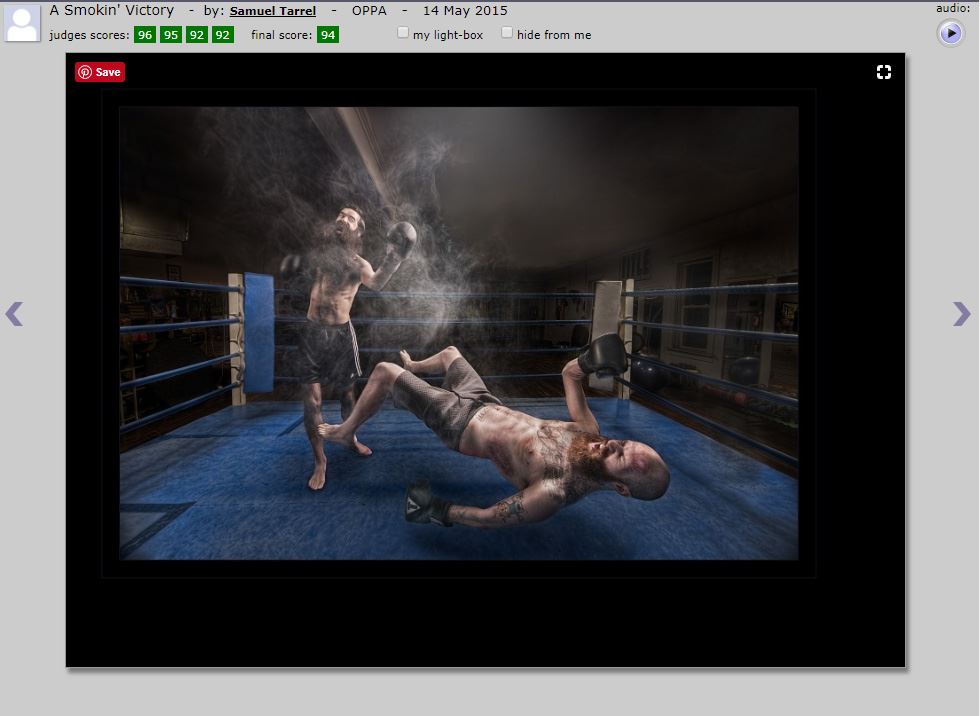IMAGE TITLES - THE 13th ELEMENT
By Lisa Dillon, M.Photog.Cr, CPP, FP-OR, HFP-OR
For new competitors, one of the most difficult parts of the Competition Game can be coming up with a title for your image. It’s a new concept—clients don’t expect titles. And what makes a good title anyway? It’s not one of the 12 elements, so how important is a title, really? Well, let’s start from the beginning.
First, your title is the only chance you have to speak directly to judges so don’t waste it! The title is your chance to direct the judges’ attention to exactly what you want them to see. Sometimes the subject of your image isn’t the obvious house on the hill—it’s the small dog in corner that is standing guard over his charges. How do you get the judges to see that first? With a title that directs them to that spot. Instead of calling your image “House on the Hill” consider a title like “Strong Sentinel” or “Keeping Watch”. 
What makes a good title? A good title will take the viewer on a journey or pull them into a story. Storytelling is one of the 12 elements and your title should be a big part of telling your image’s story. Don’t waste your one opportunity to speak to the judges with a trite, overused title that doesn’t further your story. A title such as “Summer Beauty” does not bring me, as a judge, along with you into the image. I can probably see that the subject is beautiful and tell by the surroundings that it is summer time. So what would be a better title? How about “The Edge of 17” or “Ready to Spread Her Wings” or “Soaking in the Last of Summer’s Bounty”
It’s also important to avoid what I like to call visual titles. That’s a title that is a play on words that you have to actually read to get. Using something like quotation marks or a homonym may not be well understood because the judges don’t read the titles—they only hear them. So if you are hoping your judges will understand that your fashion image of a religious subject will get that this is “Christian” Dior, rather than the work of designer Christian Dior, it may be lost on them. Likewise, an image titled “Four the Best” will likely not be understood as numeral 4 but rather the preposition “for”. There are countless examples of trying to be too clever with titles that end up being unsuccessful because the judges can’t see the title to get the play on words.
Try to avoid titles that are merely descriptive or only a place name because they don’t reach out and grab the viewer. As a judge, I can see with my eyes that a subject is beautiful or blonde or has blue eyes or all of the above. Likewise, identifying a well-known landmark such as the Eiffel Tower does little to tell a story. But maybe something like “Falling in Love with Paris” takes us on a journey through the city to this little place where the maker has fallen in love—not with a person but with an entire city. A title such as “Woman on the Beach” is less compelling than “Siren on the Shore”. Using the word siren evokes a whole story of danger and beauty and mythology—that’s a lot of story packed into one little word!
Another thing to consider when choosing titles is pronounce-ability. Someone has to read your title. If you choose a place name that has a quirky pronunciation (Tualatin? Willamette? Schenectady? Worster? Tigard?) or if you choose a long word that is unfamiliar (Pugilistic? Hirsute? Diaphanous? Sesquicentennial?), you risk having the title butchered during the reading or having the judges not understand the title. That goes for foreign words as well. A title such as “Pas de deux” or “Tour Jete” may be obvious to a ballet aficionado but the title reader may not read French and mispronounce the title. And even if the title is pronounced correctly, you still have the judges who may or may not understand French or ballet terms.
 So how long should your title be? That’s up to you, but in my experience, the strongest titles are between 2 and 5 words. Now that doesn’t mean a one-word title can’t be successful—it certainly can. But that’s a lot of pressure on one word and it has to be meticulously chosen. As for longer titles, that depends. Sometimes it can be amazing. One of my all-time favorite images is one by Kate Higdon.
So how long should your title be? That’s up to you, but in my experience, the strongest titles are between 2 and 5 words. Now that doesn’t mean a one-word title can’t be successful—it certainly can. But that’s a lot of pressure on one word and it has to be meticulously chosen. As for longer titles, that depends. Sometimes it can be amazing. One of my all-time favorite images is one by Kate Higdon.
The title is long but it is a perfect example of a longer title working because the storytelling is so powerful. The title is “She Loved Her Roses, He Loved Her” Bam! What a punch of imagery and storytelling that is moved along so well and sucks you in so deeply because of the impact of that title. Would the image work just as well with a different title? I think it would have scored well with almost any title, but I suspect it wouldn’t have been a 100 image without such an emotive and thought-provoking title.
Sometimes a title can be a way to set context or let the judges know you are aware of something they see in the image that might be a concern to them. In the image “A Smokin’ Victory”, maker Sam Tarrel realized that there was no context for having a smoky atmosphere for this image. When he was creating it, he liked the idea of the smoke and the atmosphere it created but after it was processed, he realized that there was actually no reason for the smoke to be there. But by calling it “A Smokin’ Victory” he created a story for the existence of the smoke and made it work.

What’s the best way to come up with a title? There are lots of different avenues—some people like to use song lyrics or song titles, book or movie titles. Or bits from a well-known poem. Or well-known phrases (that aren’t overused as titles). Some people look through magazine ads for evocative words that can then be crafted into a title. Some people—myself included—like to begin with a title and then create an image to match it. Some of my favorite and most successful images came from this technique with titles such as “Party of One” and “On the Cusp” and “Little House on the Prairie.” You may find it a fun exercise to gather with a few friends to help title your images as a group project. I have known people to have titling parties complete with adult beverages and they say the titles get better as the evening goes on. Take that for what it’s worth!
So to recap—yes, titles are VERY important. Don’t waste your chance to speak to the judges and bring them on a journey with you. Pick titles that are understandable and easy to read. Seek help if you are struggling with titling an image. It’s ok—even encouraged—to start with a title and create and image to tell that story.
This Article was originally featured in FOCUS Oregon.

Lisa Dillon is a Master Craftsman Photographer and CPP from Portland Oregon. She has also earned the Fellow of Photography degree, Honorary Fellow of Photography and Diamond Fellow of Photography from OPPA. She is in her 21st year of business and specializes in high school senior, business and family photography. She is a two-time past president of Oregon Professional Photographers Association (OPPA) and past president of the Professional Photographers of Oregon (PPO). Lisa is an approved juror for OPPA and is an Approved Juror for the Professional Photographers of America (PPA). Lisa served as a PPA Councilor representing Oregon since 2013-2022.
